In the realm of surveys, questions hold the key to unlocking a treasure trove of insights. As businesses strive to gather valuable customer feedback data, the choice between open-ended and closed-ended survey questions becomes a pivotal moment.
While closed-ended survey questions increase response rate and offer quantifiable data, open-ended questions compel respondents to give voice to their thoughts and share their experiences in their own words.
Unrestricted, detailed, and qualitative, open-ended questions offer allows for more detailed and nuanced feedback, providing a deeper understanding of customer experiences and perceptions. When coupled with AI, the process of collecting detailed feedback becomes even more easy.
In this blog post, we understand what open-ended questions are, their examples, sample questions based on different use cases, and ways to use them more effectively. We have also covered the advantages and disadvantages of open-ended survey questions towards the end to help you make a more informed decision.
TL;DR
-
Open-ended questions are survey questions that allow respondents to answer in their own words, rather than selecting from predefined options.
-
They can serve diverse purposes, including gathering customer feedback, retail feedback, employee feedback, patient feedback and more.
-
The advantages are manifold, ranging from unearthing detailed information and genuine customer insights to obtaining demographic data and enriching customer satisfaction.
-
Analyzing open-ended data is time-consuming, response rates can be low, and finding quantitative statistics is limited, with a risk of collecting irrelevant information.
-
Zonka Feedback is a powerful survey software that allows you to create amazing surveys with open-ended questions. You can sign up and create surveys with subjective questions or schedule a demo to know more about the product.
Build and Send a Survey Today 🔥
Choose from over 30+ question types including open-ended questions, add your own themes, and create amazing surveys that people love answering.

What are Open-Ended Survey Questions
An open-ended question refers to a question in which options are not provided to your customers to choose their answers. Rather, it is informative in nature and enables your customers to express their viewpoints through freestyle answers which may be in the form of sentences, records, and stories.
Unlike closed-ended questions that offer predefined answer options, open-ended questions encourage respondents to express their thoughts and opinions in their own words, providing deep understanding into customer experiences.
Since traditional methods often involve manually reading and categorizing each open ended response, which can be time-consuming and prone to human error, AI survey tools can easily analyze them and extract key themes, sentiments, and trends.
Top 10 Open-Ended Question Examples to Collect Customer Feedback
Whether you're conducting customer feedback surveys, employee surveys, patient surveys, or student surveys, here are some of the most effective open-ended questions that you can incorporate:
#1. What were the challenges you faced with us?
This question allows customers, attendees, or employees to directly share the challenges they encountered. It encourages them to express their concerns directly to you, rather than posting negative reviews online.
Moreover, it is a great way to communicate that you are focused on solving every challenge, no matter how trivial or huge it is.

#2. What did you like the most about us?
When you ask respondents what they like the most about your organization or the brand, they are very likely to recall positive experiences. And these positive experiences can sometimes even outweigh negative experiences and create a good impression in customers' or people's minds.
Moreover, simple answers to this question will help you understand what's working in your favor and help you capitalize on it further.
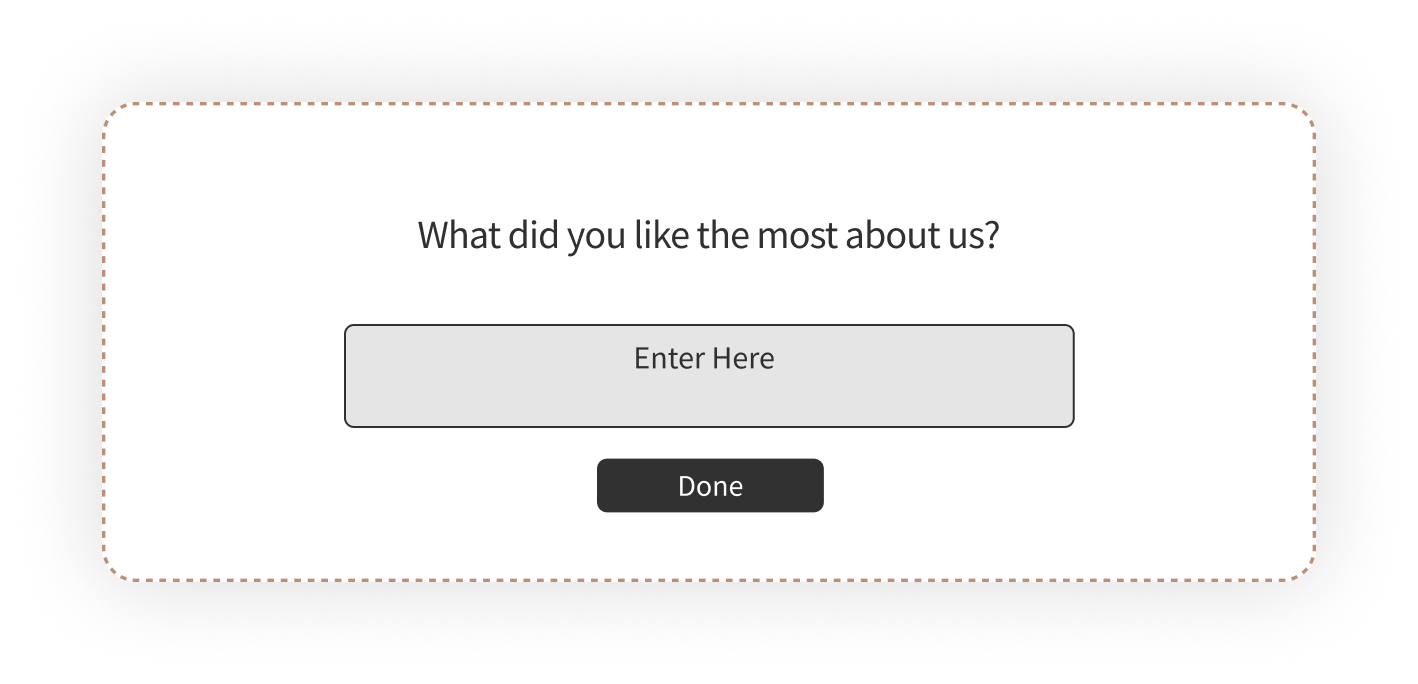
#3. Is there anything else we should know?
One of the biggest advantages of an open-ended question is that it allows you to highlight challenges that you may have overlooked. They prompt the person responding to reflect on their experiences and identify issues they may not have consciously considered.
This information is invaluable for discovering long-standing challenges and improving your brand or service. For example, in healthcare, open-ended health survey questions can reveal insights that lead to better patient care and increased satisfaction.

#4. How would you describe your experience with us?
This open-ended question allows people to share the summary of their experience with you. As a result, you, can get an insight into different experiences that may be a mix of both good and bad, which will help you understand what's working and what's preventing you from reaching your goals.
For example, in a retail store, the customers may express how they would like to avail of the discount on-premises instead of just on the web. This information can help you refine your offerings and eliminate challenges.
#5. What can we do better to improve your experience with us?
An open-ended question where you are not necessarily asking the respondent to share their challenges, you can dig for an opportunity to make improvements even if it isn't the need of the hour. But thinking ahead will help you separate yourself from the crowd. This question will encourage your respondents or customers to think as a stakeholder and help you with innovation.

#6. What is the primary reason for your score?
This is usually a follow-up question in NPS, CES, and CSAT surveys. It prompts customers to share in their own words the reason for the score they chose to give you.
This question helps brands pinpoint challenges or experiences and enables them to make improvement efforts in the right direction and improve the quality of feedback.

#7. Would you recommend us to others? Please share the reason.
People willingly recommending you to others is a major indicator of the success of your relationship with them. So, make sure to ask them if they would recommend you and why. This would also help you find out what are the things stopping your respondents/customers from recommending you to others.
#8. What was missing in the experience you had with us?
When you ask your customers this question, you are basically putting them in the role of your brand's stakeholders, enabling them to think from a business perspective. And this can uncover crucial information that you may have never given any thought to.
For example, the customers in a restaurant may share that they would like to make reservations beforehand through a mobile application. Such feedback can greatly improve customer experience.
#9. What are the factors that usually influence your purchase?
This open-ended question is extremely useful for researchers and is aimed at uncovering factors that may influence the purchase decisions of customers. It is an important one since brands sometimes may not be able to predict everything that customers may be expecting.
The answers may not only help you improve on certain factors but also introduce new practices to attract and retain customers.

#10. What are one or more things that may stop you from making a purchase with us?
Often, customers may continue doing business with you until they experience something that may be a deal breaker. For example, having to wait for a long time before getting to speak to a support agent for an issue can drive customers away.
Responses to this feedback question help in identifying potential problems before they arise. This can help you make the right decisions to prevent customer churn.

Examples of Open-Ended Questions Based on Industry Specific Use Cases
Here are some examples of open-ended questions based on industry specific use cases and real-life example of top companies using Zonka Feedback to enhance their offerings.
1. Open-Ended Questions for SaaS & Technology
In SaaS and technology, open ended survey questions can help you uncover unexpected pain points and feature requests, leading to better product development. While multiple choice questions miss the 'why' behind user behavior, open-ended questions can unlock user workflows and motivations, driving targeted improvements.
-
What features or improvements would you like to see in our software?
-
How has our software helped you in your daily tasks or workflow?
-
What additional functionality would make our software more useful to you?
Real Life Example: SmartQ
SmartQ effectively managed digital customer feedback by utilizing Zonka Feedback's on-premise platform. They implemented a variety of surveys, including open-ended questions, to measure customer satisfaction and gather insights for service enhancement.
SmartQ collected and easily analyzed feedback systematically by using a structured approach, leading to informed decisions that improved their offerings and overall customer experience.
2. Open-Ended Questions for eCommerce
eCommerce survey questions help businesses gather important data from customers regarding their experience with the online store. These can be asked post any event like a purchase, order delivery, cart abandonment, etc. You can actually find the reason behind a great or bad experience, work on the issues highlighted, and improve customer experience to boost your sales.
-
What are the main factors that influenced your decision to purchase from our website?
-
How would you rate the ease of navigation and user-friendliness of our online store?
-
What improvements would you suggest to make your online shopping experience better?
Real Life Example: Purplle
Purplle faced challenges in collecting in-depth feedback for their beauty advisors and ensuring the accuracy of store-specific feedback.
For this, they leveraged Zonka Feedback's CSAT surveys, which included open-ended questions, that allowed them to collect in-depth feedback for all beauty advicsors effectively, take action and increase their CSAT rating to over 98%.
3. Open-Ended Survey Questions for Healthcare
When answering health survey questions, 76% of the patients chose to add one or more comments to their questionnaires. Therefore adding open ended questions in a healthcare survey is extremely important. These questions provide a deeper understanding of patient experiences, preferences, and challenges, enabling healthcare providers to tailor their services and improve patient care.
-
What were the primary challenges you faced in seeking healthcare with us?
-
What could we do better to improve medical outcomes at our facility?
-
What are the major concerns you had during your treatment?
-
How would you describe our facility and healthcare?
Real Life Example: City Cayman Islands
City Cayman Islands significantly improved their feedback collection and analysis system with the help of Zonka Feedback surevy tool. By utilizing Zonka Feedback's open-ended survey questions, they gained deeper insights into customer experiences and preferences, allowing them to make informed decisions and enhance their services.
4. Open-Ended Questions for Retail
When it comes to the retail survey questions, understanding customer preferences and improving the overall shopping experience is crucial for success. Open-ended questions provide an opportunity to gather valuable insights from customers and make informed decisions to enhance their retail experience.
-
What factors influenced your decision to purchase from our store?
-
How would you describe your overall shopping experience with us?
-
What improvements would you like to see in our product selection or store layout?
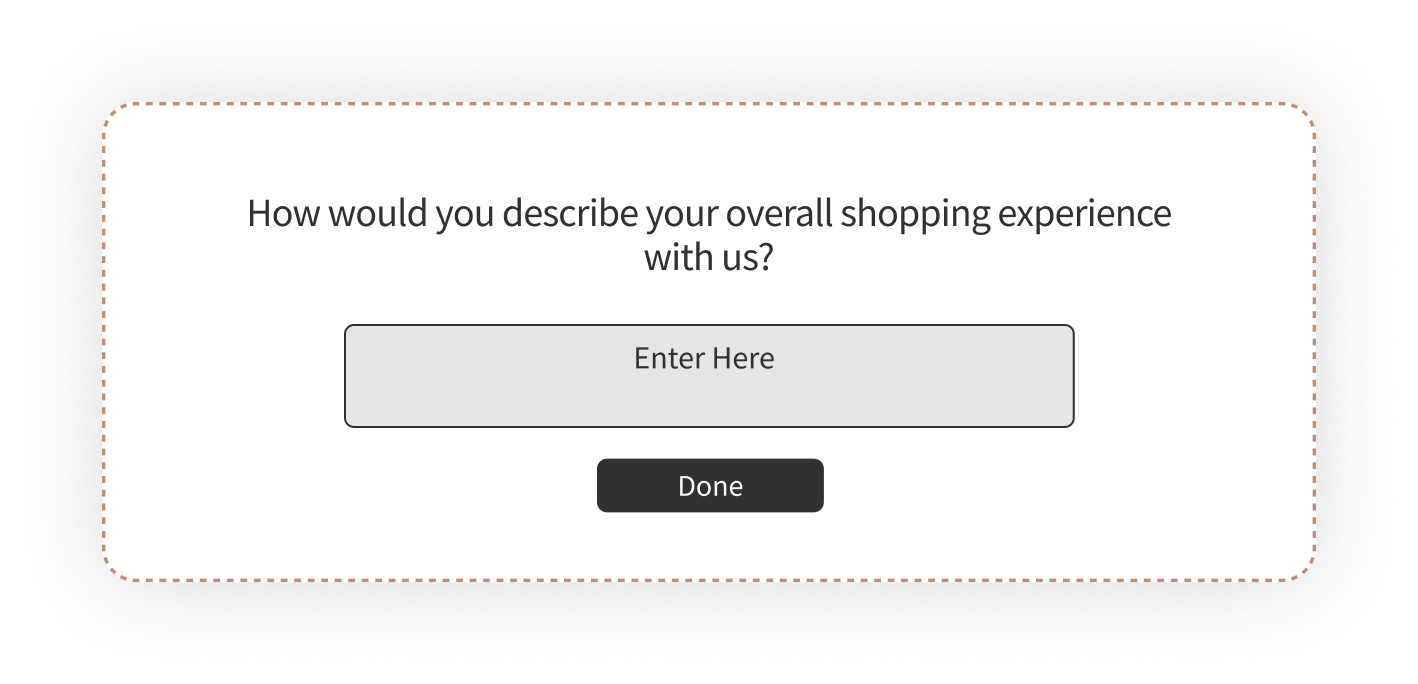
Real Life Example: Leroy Merlin
Leroy Merlin leveraged post purchase surveys of Zonka Feedback to enhance their feedback collection process. Using SMS surveys across 95 locations, they gather over 15,000 responses monthly. Open ended responses that customers offer has helped them gain detailed insights and enhance their customer experience significantly.
5. Open-Ended Question Examples for Hospitality
When it comes to the hospitality industry, understanding the needs and preferences of guests is crucial for providing exceptional service.
By incorporating these hotel survey questions into your surveys, hotels can gather valuable insights and make data-driven decisions to improve their services and exceed guest expectations. This customer-centric approach can lead to increased guest satisfaction, positive reviews, and repeat business, ultimately contributing to the success of the hotel. You can add open-ended questions to your surveys
-
What are the main factors that influenced your decision to stay at our hotel?
-
How would you describe the quality of our customer service?
-
What can we do to enhance your experience during your stay?
Real Life Example: Jones the Grocer
Jones the Grocer gather feedback from customers and employees using tablet-based kiosks, online surveys, and email surveys - with a key focus on open-ended survey questions. This approach allows them to gain comprehensive insights and make informed decisions to enhance their overall customer experience.
Examples of Open Ended Questions to Collect Different Types of Feedback
Let us look at some of the open ended questions examples that can be used to collect specific type of customer feedback.
a. Open-Ended Questions for Customer Feedback
Open-ended questions to capture customer feedback are aimed at understanding the purchase intent of customers. The responses help brands make decisions aligned with customers' interests to be able to increase conversions/sales.
-
What can we do to help you find what you're looking for?
-
What is stopping you from purchasing from/doing business with us?
-
What are your main concerns about our product/service/brand?
-
What did you enjoy the most about our service/store?

b. Open-Ended Questions for Product Feedback
By utilizing open ended questions in product feedback surveys, you can get idea on specific issues that your product might be having. The detailed feedback from open ended questions also offers users to suggest new features, improvements, or changes that they would want in your product. You can also learn why users prefer certain features and integrate it into your product.
-
What specific features or improvements would you like to see in our product?
-
How does our product compare to other similar products you have used?
-
In what ways do you think we can enhance the user experience of our product?

c. Open-Ended Questions for Website Feedback
Incorporating open-ended questions for website feedback allows you to uncover specific website issues that may hinder visitor experience. Open-ended questions help you understand why users prefer certain aspects of your website, enabling you to tailor your website to better meet user needs.
-
What specific improvements would you like to see on our website?
-
Have you encountered any challenges or difficulties while navigating our website?
-
How does our website compare to other websites you frequently visit?

d. Open-Ended Questions for Employee Feedback
There may be several workplace challenges that employers may not have anticipated. Therefore, it's best to let employees share feedback through open-ended survey questions.
-
What is the best/worst thing you have experienced working here?
-
How would you describe the growth opportunities in our organization?
-
Do you prefer working from home or in the office? Please share the reason.

Why Should You Use Open-ended Questions in Your Survey?
Here are some of the reasons you might want to include an open-ended question in your feedback surveys:
1. Get Detailed Information
Open-ended questions are instrumental in obtaining detailed responses from survey participants. When you use AI powered text analysis tools like Zonka Feedback, you get access to text analytics that can help you identify key themes, sentiments, and trends within open-ended responses, providing deeper insights into customer opinions and experiences without manually reviewing every feedback.
For instance, in a restaurant survey, a customer might say, "I loved the food but the service was slow." Text analytics can identify key themes (slow service) and sentiments (loved the food), helping prioritize improvements. This approach offers detailed insights that improve customer satisfaction.
2. Identify Sentiments
Open-ended questions help identify sentiments of structured and unstructured data by allowing respondents to express their thoughts freely. In a survey, a respondent might write, "The product exceeded my expectations," indicating a positive sentiment.
With sentiment analysis tools, this response can be automatically categorized as positive, providing insights into customer feelings. This can enable you to understand customer sentiments at scale, and tailor your products or services to meet customer needs more effectively.
3. Understand Customer Intent
They also help understand customer intent by allowing them to express their motivations and reasons behind their actions. For example, in a survey, a customer might explain, "I prefer shopping online because it's more convenient." This response indicates the customer's intent to shop online for convenience.
Analyzing such responses can help you understand why customers choose certain products or services, enabling you to tailor your offerings to meet customer exxpectations.
4. Obtain Qualitative Data
A survey with closed-ended question offers quantitative results, whereas open-ended questions allow for conducting qualitative research and collect qualitative data. This means that you can not only measure your respondents' satisfaction or loyalty to your brand, but you can also capture their viewpoints, varied perceptions, and honest opinions. And this can help you uncover truths to make bigger positive changes.
For example, a patient who is satisfied with the care offered at a hospital but is not able to make an appointment online can share this problem through an open-ended question. As a result, the healthcare facility may develop a website to increase patients' ease of booking appointments.
5. Capture Wide Range of Answers
Unlike closed-ended questions, open-ended questions do not put a limit on answers. This means questionnaire you put can be easily answered and may come as a surprise which you did not expect.
For example, a retail store survey may capture customers' sentiments about the quality of products, customer service, and return policy. But with one open-ended question, customers can highlight issues that may usually go unnoticed, for example, poor parking or unavailability of self-service.
Advantages and Disadvantages of Open-Ended Questions
Let us look at some of advantages of open-ended questions so that you can make informed decisions based on rich, detailed insights from your survey respondents.
Advantages of Open-Ended Questions
Like every coin, open-ended survey questions also come with two sides- a set of advantages and challenges for businesses to navigate cautiously to make the most of open-ended surveys.
Here are some of the advantages that you can enjoy by using these subjective questions in your surveys.
-
Empower and Engage Respondents: Open-ended questions empower respondents by allowing them to express their thoughts freely, leading to more engaged survey participation. This engagement can lead to more thoughtful responses and valuable insights for your businesses.
-
Unveils New Perspectives: Unlike closed-ended questions that limit answers to predefined response options, open-ended questions can reveal entirely new perspectives and information you might not have even considered.
-
Get Detailed Insights: Open-ended questions enable you to get real customer insights regarding your products/services and their experience in their own words. You get to know their perceptions, opinions, and attitudes towards your brand.
-
Enables to Obtain Demographic Information: Open-ended questions help you to obtain demographic and personal information of the customers like name, age, gender, phone number etc. which you can use to segment your products and target a particular demographic group. It also helps you to contact your customers for sales and marketing purposes whenever needed.
-
Enhanced Customer Satisfaction: When you get to know how your customers actually feel about you and what they want from your products and services, you make better decisions regarding your product and marketing thus enhancing customer satisfaction.
Disadvantages of Open-Ended Questions
Despite being a good source for collecting real customer insights, open-ended questions hold some major drawbacks. Let's review some of the common disadvantages of open-ended questions here.
-
Time-consuming: One of the main disadvantages of open-ended questions is that it takes time for the customers to write feedback in their own words. Due to this, the whole process becomes lengthy and time-consuming.
-
Low response rate: As you know, everybody is busy with his own stuff and nobody prefers to spend much time writing and filling out the feedback forms. Therefore, the response rate of surveys with open-ended questions is low as compared to the surveys with closed-ended questions.
-
Difficult to analyze and interpret data: One challenge with open-ended questions is the complexity of analyzing and interpreting the diverse feedback, as customers provide their thoughts in various ways, making it challenging to create meaningful reports. Unless you are using survey tools that support analyzing texts and sentiments, you will find it difficult to perform data analysis manually and will consume time.
-
Can Gather Irrelevant Data: Open-ended questions enable the customers to provide freestyle answers in their own words and every person has his own way of expressing his/her feelings. So, there is always a higher possibility of capturing irrelevant data which may not be useful for the business.
Tips & Best Practices to Use Open-Ended Survey Questions More Effectively
Believe it or not, asking only open-ended questions can negatively affect your survey response rates. What you need to do is make taking the survey easier for your respondents while also focusing on the quality of responses. And the best way to do that is by combining open and closed questions in surveys.
-
Employ a survey platform with auto-tagging capabilities to categorize responses automatically, streamlining the analysis process.
-
Leverage text analytics to delve deeper into the substance of open-ended feedback, extracting valuable insights from the text.
-
Employ sentiment analysis tools to gauge the emotional tone of customer responses, providing a nuanced understanding of their feedback.
-
Balance open-ended questions with closed-ended ones. This provides a structured framework for data collection while allowing participants to share their thoughts in their own words.
-
Consider the placement of open-ended questions. Starting with them can encourage participants to think more deeply about the topic from the beginning.
-
While open-ended questions are valuable, too many can be overwhelming for respondents. Use them strategically and focus on the most critical aspects.
-
If your survey is broad, consider segmenting open-ended responses based on demographics or other relevant factors. This allows for more nuanced analysis.
Conclusion
To sum up, we can say that if you want to have exact customer insights about their feelings, attitudes and their own perspective towards your products, services, and the organization, open-ended questions can serve the purpose just as line managers are taught to use open questions to encourage their team members to open up. But if you want to quickly obtain quantitative statistics of your customer feedback, open-ended questions are not a good choice. An ideal survey would have a mix of both open-ended and close-ended questions.
With Zonka Feedback, you can fully customize your feedback form using an online survey builder and choose from over 30+ question types, perform text analysis, sentiment analysis, and identify the intent behind customer feedback. You can also automate workflows, set up alerts for critical responses, and generate insightful reports with advanced analytics for data-driven decision-making.
To start creating your surveys, schedule a demo now!
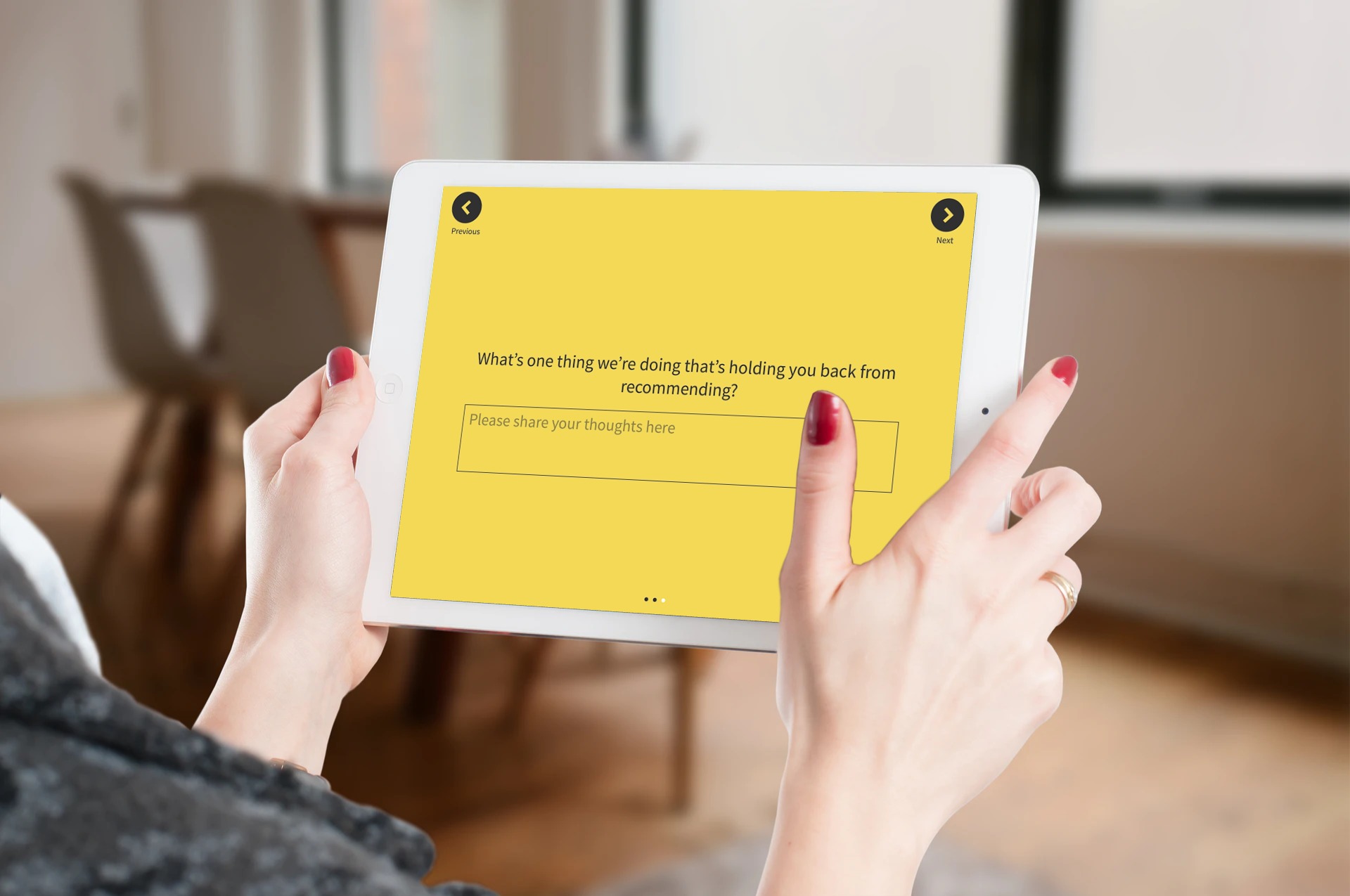

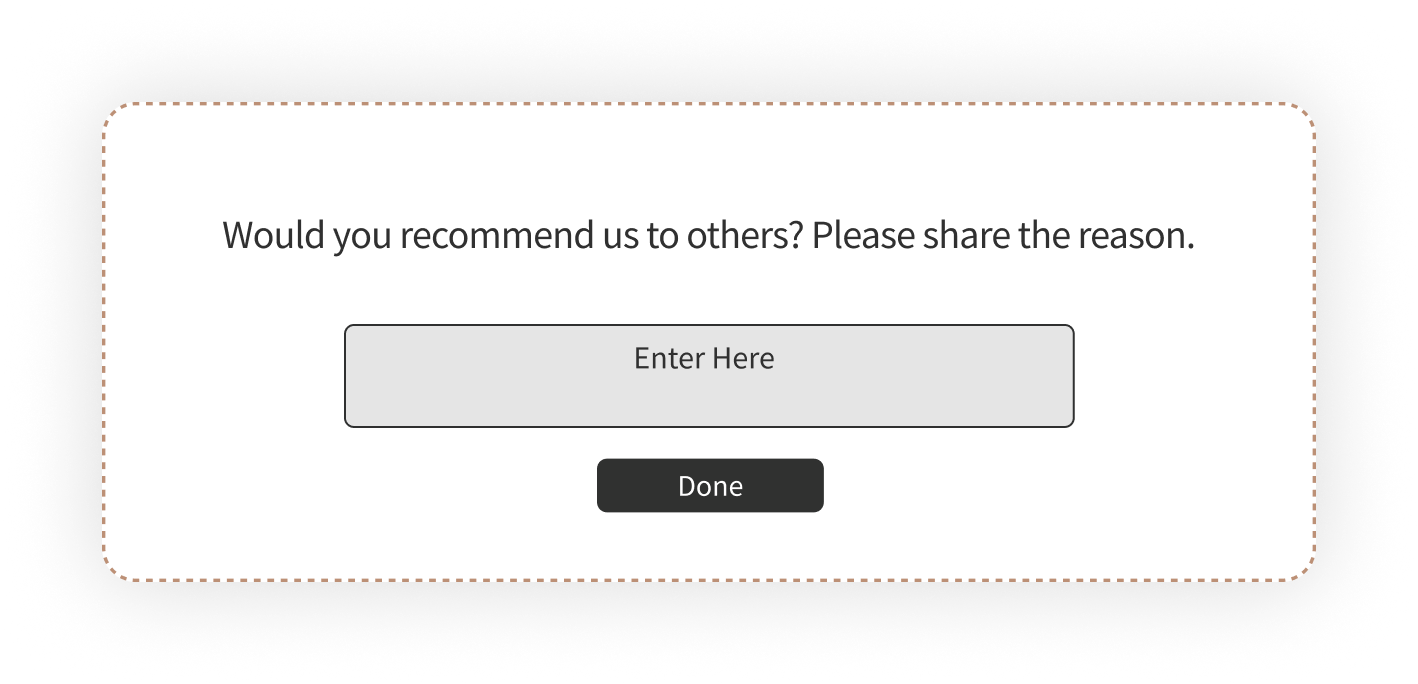
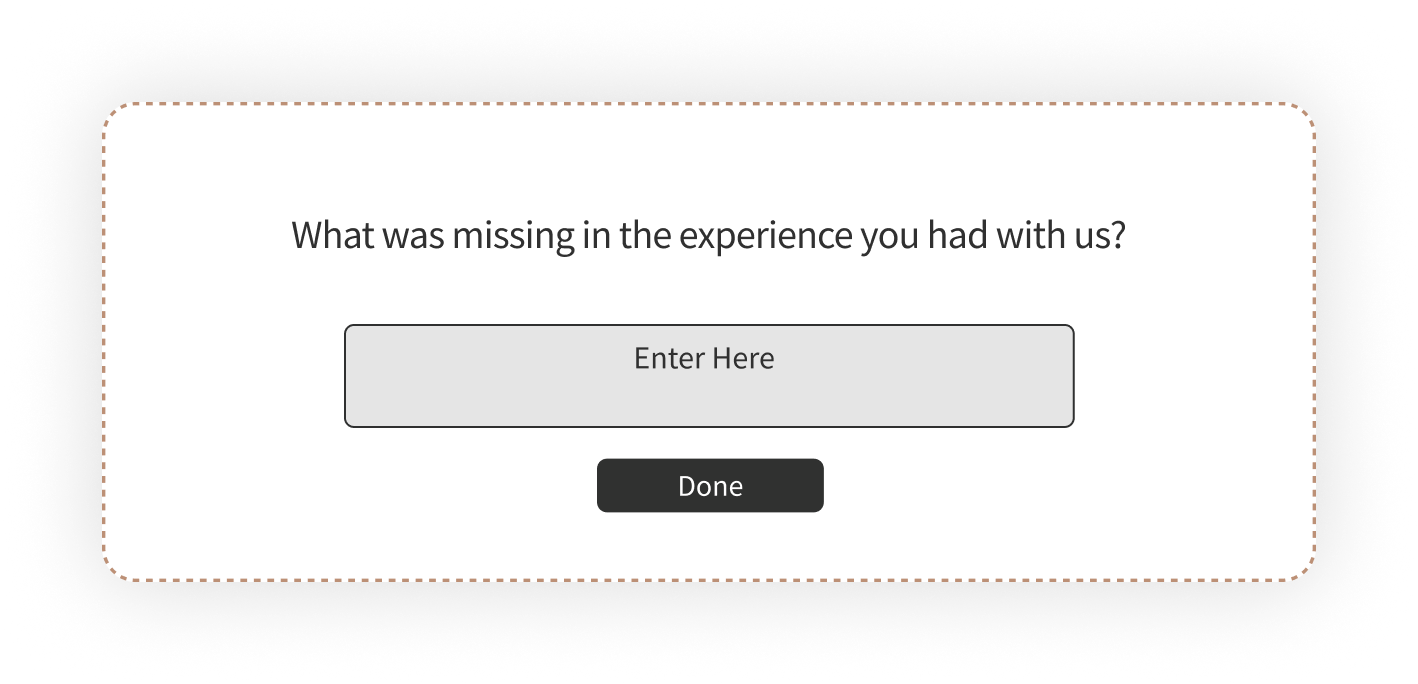







.jpg)




.png)

.jpg)